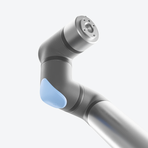As factory automation becomes accessible to even the smallest businesses, cobot (collaborative robot) palletizing is one of the first areas business owners are looking to explore. Of the many robot applications, palletizing is a popular choice to drive workplace efficiency, overcome staff shortages and keep human workers safe. Here are just five of the ways a turnkey cobot palletizing solution can help your business reach its key objectives.
Employee safety
Manual palletizing is hazardous, even for the most safety-conscious and resilient employees. Proper training and enlisting workers with the right physical capabilities can minimize the risks, but a heavy task like palletizing is inherently risky. It can cause immediate accidents and lead to long-term health concerns from repetitive heavy lifting.
The Australian Institute for Health and Safety ranked “lifting, carrying or putting down objects” as a top three cause of musculoskeletal injuries in the workplace. And in the UK, the Government's Health and Safety Executive (HSE) found that 20% of non-fatal workplace injuries were due to handling, lifting or carrying tasks.
It's not just heavy loads that pose a risk either. UK law firm JMW states that “overexertion and tiredness” is the top cause of injury, particularly when carrying out tasks essential to palletizing like lifting, pulling and pushing. For businesses struggling with labor shortages, there’s a real risk that overworked employees could put themselves at greater risk of injury during overtime.
Cobot palletizingwill protect your people from injury or reduce the risk greatly. For example, your cobot could replace night-shift workers and allow your people to work when they’re well rested and alert. Or, it could work alongside your people (subject to risk assessment clearance) to boost your stacking and packing capacity without pushing human workers to the point of exhaustion.



